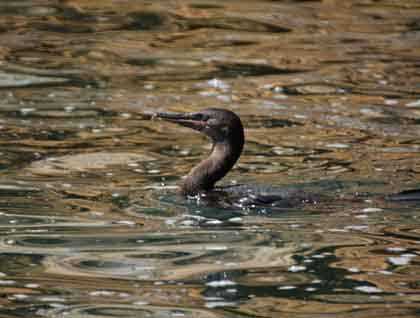Isabela Island is nearly a million years old and is the largest island of the Galapagos. Today we wake up in Urbina Bay, an area that has been uplifted due to the tectonic activity in the past century. Now we find corals that have been exposed to the sun, vegetation and some species that have adapted here. After breakfast we get ready and we get in the Zodiacs for a wet landing. There, we are able to see many turtle’s nests. We begin our hike and along the way we see the landscape and some animals, Marine Iguanas and Flightless Cormorants, until we reach an area where we found huge pieces of coral.
After this point we start heading inland and right there in the middle of the trail we found the largest land iguana of the archipelago. They are found only in this part of the Galapagos. This one was a female and it looked like it was just resting flat on the ground, but it could have actually been digesting all the food it had eaten. After a long hike, we eventually found the giant tortoises. Continuing along, we ended up on the beach and our guests got into the water to enjoy and refresh.
For the afternoon we moved to our next destination, Tagus Cove, which was an anchoring place for sailors in the last couple of centuries. We found graffiti that ships have left behind; here it remains in time. We have a mix of activities for our guests to choose from like kayaking, snorkeling, a hike to an amazing view point and also a Zodiac ride; there are options for everyone.
Our guests enjoyed this day. After the orange clouds of the sunset rolled in, we were back on the National Geographic Islander being briefed on the next day’s activities. Every day here is very different from each other, giving diversity of experiences, landscapes and fauna to our guests.







